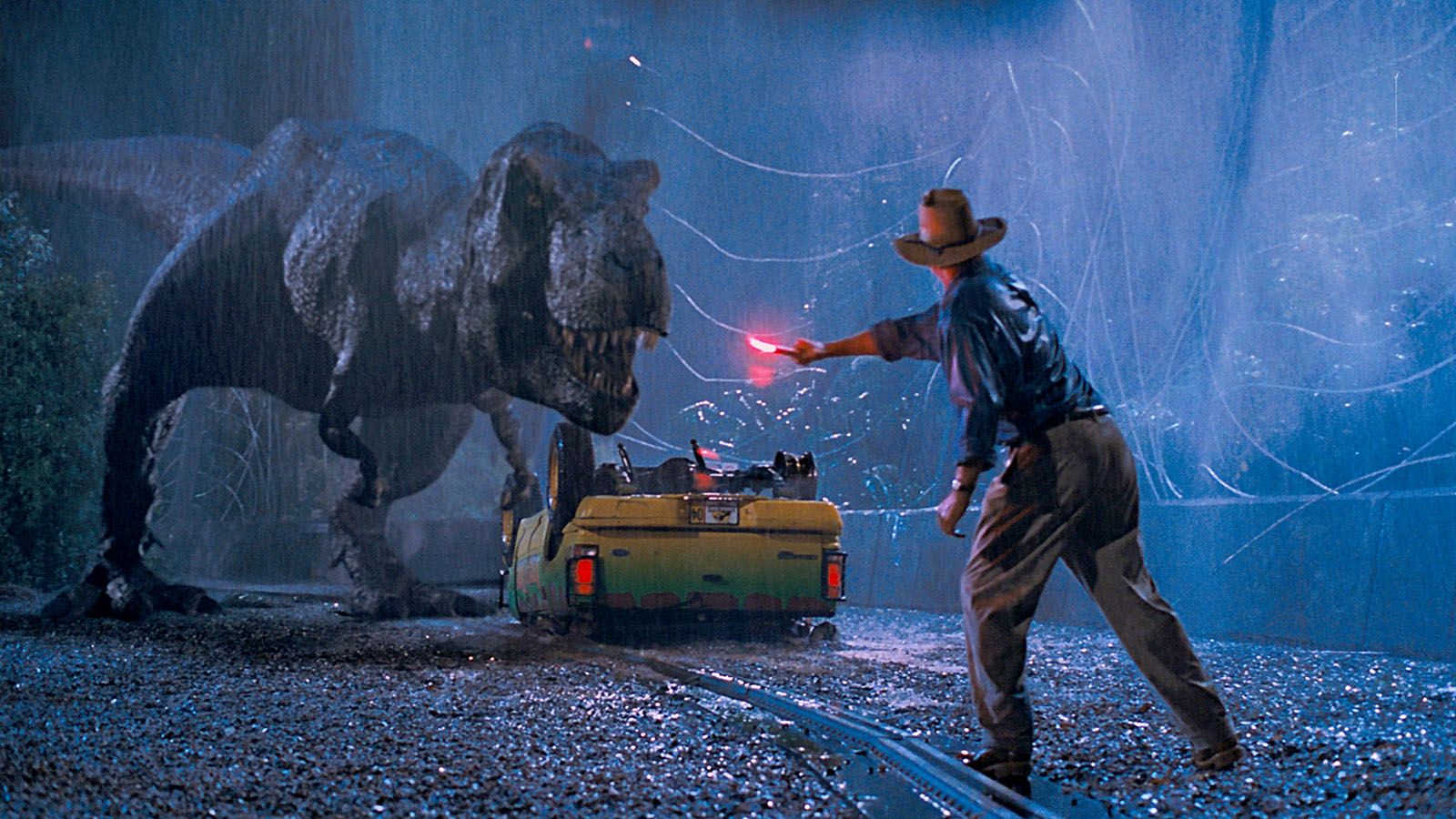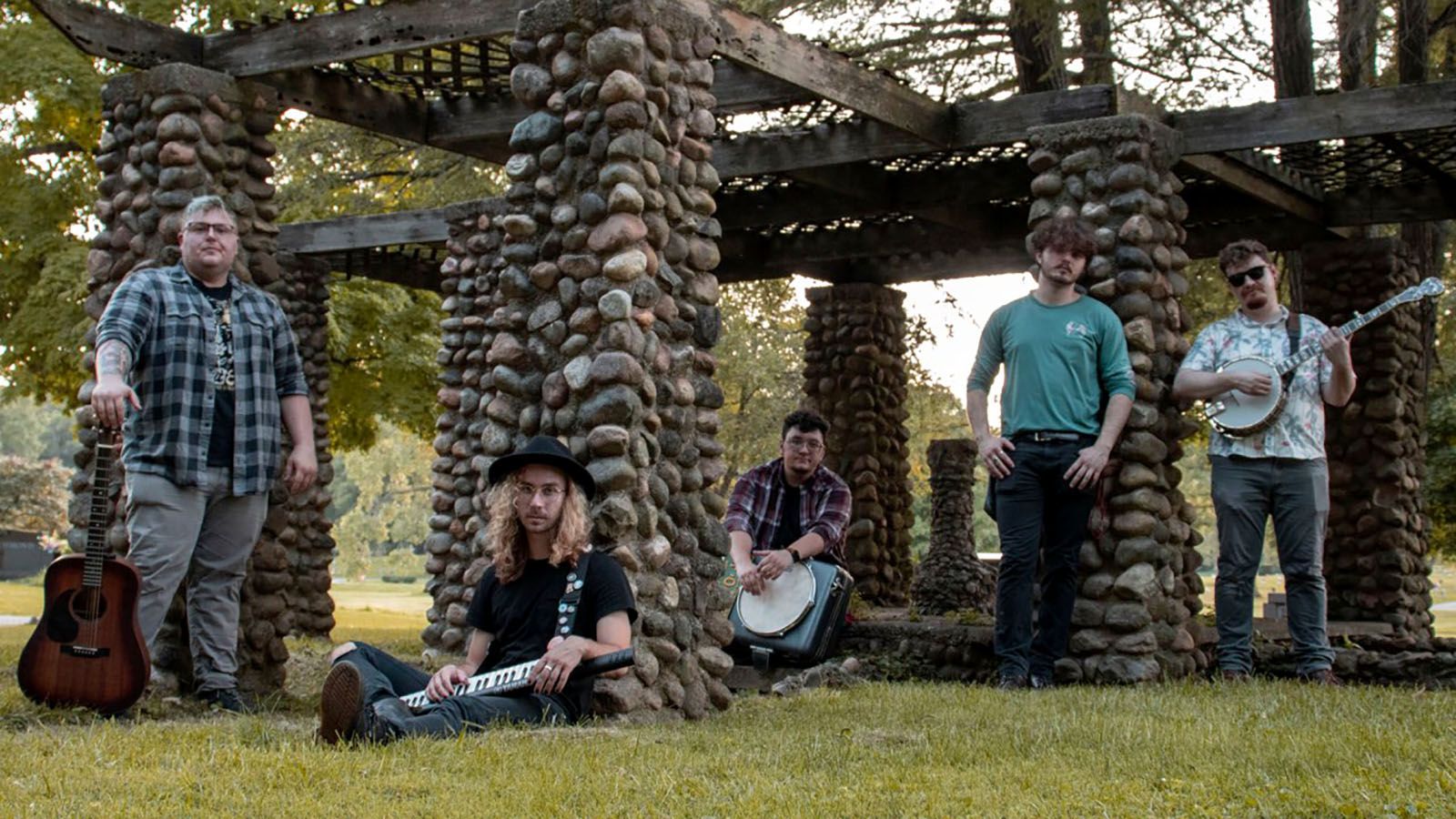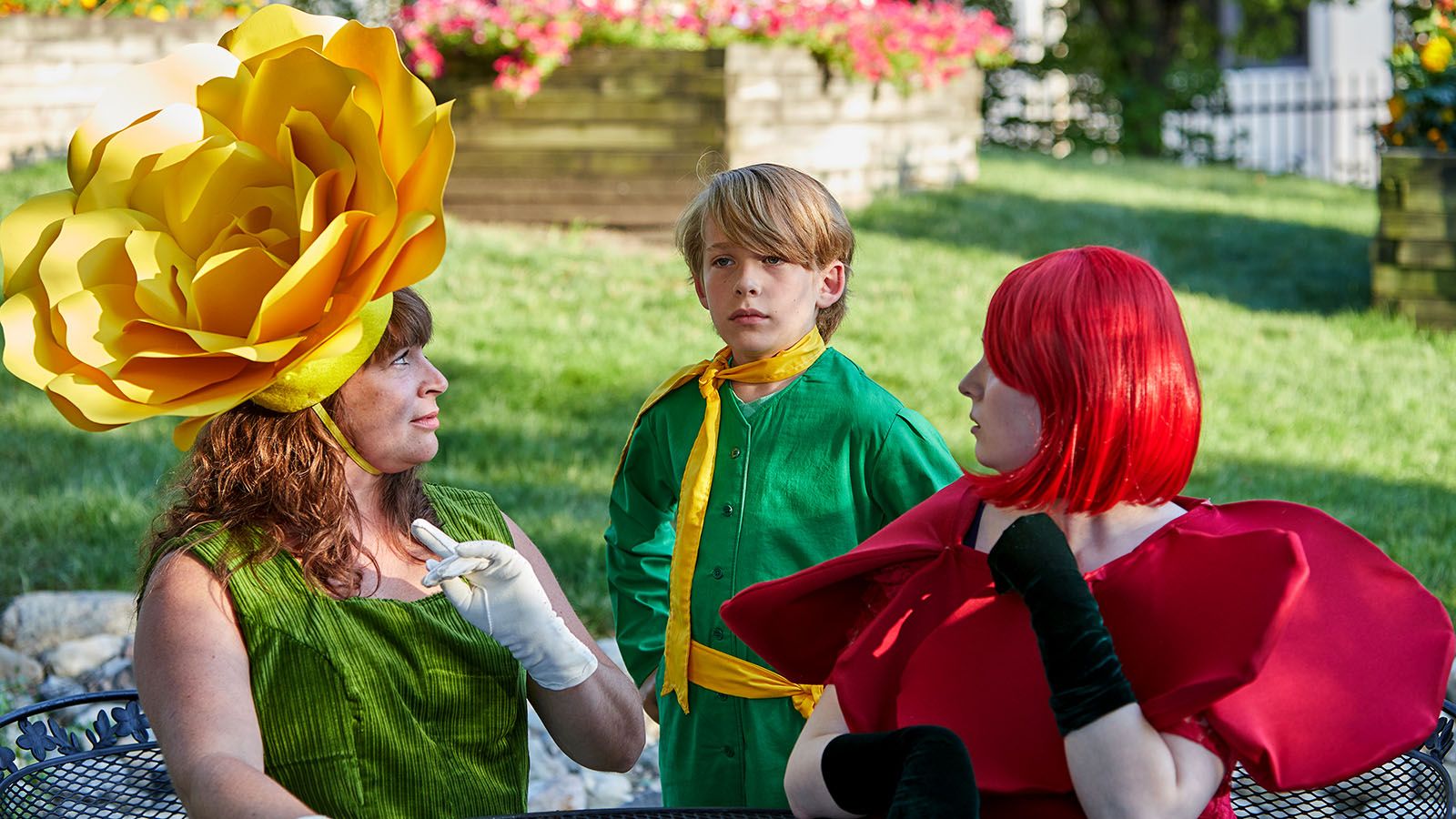It’s a blockbuster science-fiction thriller on a September evening in the park, but it’s also a unique opportunity to hear a huge group of amazing musicians perform daredevil music live on stage.
On Sept. 17 at Foellinger Theatre, the Fort Wayne Philharmonic Orchestra will be led by guest conductor Caleb Young as they screen Jurassic Park, playing John Williams’ score. In recent years the Philharmonic has presented several beloved films with Williams’ soundtracks. It’s a new tradition. In fact, it’s a new form of entertainment.
Working with a legend
Williams is arguably the best-known composer in the world, across all genres of music. Everywhere movies are shown, people who may not know his name can recognize his themes from over 120 films including Jaws and E.T. the Extra-Terrestrial, as well as the Star Wars, Indiana Jones, and Harry Potter franchises. Having celebrated his 90th birthday in February, his music has been everywhere this year, and orchestras have celebrated with tribute concerts, including the Fort Wayne Philharmonic’s in March.
Astonishingly, Young comes to Fort Wayne right after having worked with Williams and the Los Angeles Philharmonic.
“I conduct rehearsals for him,” Young said when we spoke with him last week. “I assist him in Europe as well.
“I’ve been working with him for a year and a half. It’s his 90th birthday party at the Hollywood Bowl. Eighteen thousand people (a night) will come out and enjoy his music and see him conduct (between Sept. 2-4).”
Wow. To be clear, Williams won’t be coming to Fort Wayne, but we’re in good hands with Young.
Continuous music
These days, Young lives in Berlin and travels to conduct orchestras all over Europe and the U.S. He will return to the area in December for the Philharmonic’s Holiday Pops on Dec. 9-10 and Dec. 17-18 at Embassy Theatre and Dec. 20 at Honeywell Center in Wabash.
The idea of an orchestra playing the entire soundtrack while the film is projected for an audience is rather new. It takes a lot of technology and a larger orchestra. When the Philharmonic plays one of their Masterworks concerts at the Embassy, there are around 65 musicians. When they gave their Music of Led Zeppelin and Rolling Stones performances with the Windborne band at Sweetwater Pavilion, there were only 27 in the orchestra. But for Jurassic Park, there will be 90, one of the largest productions they have done.
“It’s three flutes, three oboes, three clarinets, three bassoons, six French horns, five trumpets, four trombones, tuba, timpani, four percussionists, two harps, piano, three synthesizers, plus all the strings. I mean, it’s just massive,” Young said. “It’s about as Hollywood as it gets.”
Like the Zeppelin and Stones concerts, this production is part of a new generation of experiences the Philharmonic is using to reach new audiences. These performances also help finance their Masterworks concerts, where they perform the traditional classical music that the orchestra loves most.
Playing a movie soundtrack live is challenging for musicians and conductor. A typical orchestra concert features symphonies and concertos, which are long pieces of music, but they are divided into shorter sections, and the musicians have breaks in between. A movie like Jurassic Park, on the other hand, is over two hours of almost continuous music, putting unrelenting pressure on the musicians. With symphonies, a conductor can direct the orchestra to follow him, and speed up or slow down the music at will, adding his own expressive touches. When accompanying a film, every beat is locked to the action on the screen.
When composing the soundtrack in 1992, the composer’s music was recorded by the orchestra in many little pieces, with lots of starting, stopping, and correcting mistakes, then the whole thing was edited together in sync with the film.
“The No. 1 thing that people don’t realize is that this music was not meant to be played continuously from beginning to end,” Young said.
Acquiring films
Around 20 years ago, new production companies started to sell orchestras on the idea of staging live performances accompanying films. Young recalls that when he started doing this, there were only five or six films available in this format, “but there’s probably over 60 now.”
To make one of these films available, a production company prepares a version of the film with an audio mix with the dialogue and sound effects intact, but the music removed, and prints up huge books of the sheet music for the orchestra members to read from. They prepare a second print of the film that only the conductor watches on a little monitor. It has special visual cues called streamers and punches: color-coded stripes and flashes of light that match the cues in the sheet music. This is what the original conductor followed in the studio when the music was recorded.
Today, orchestras rent the whole package, and the production company sends out an audio-visual team that assists with projecting the movie and running all the microphones, monitors and loudspeakers it takes to amplify 90 live musicians in an amphitheater. And in comes the audience.
In performance, Young reads the score while keeping one eye on the video, looking out for the streamers and punches, as he directs the musicians to keep in perfect sync with the action on screen. Every orchestra member has to watch the conductor’s baton while reading thousands of notes of music. They will only have two or three short rehearsals before the performance. The burden is on the conductor.
“There’s a real juggling act, putting something like this together,” Young said. “John Williams’ stuff is much more difficult than most films.”
Audiences know Young because he specializes in concerts that connect the classical tradition with popular entertainment, with music of the highest caliber played by the best musicians. And you thought it was just a big loud movie with scary dinosaurs. Either way, Fort Wayne is in for a thrill.
 Submit Your Event
Submit Your Event




